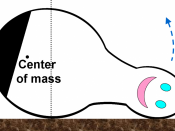Siobhain Bowen
Sociology Essay
Communications
Given the time spent by audiences consuming the media, it is hardly surprising that much speculation and debate has focused on the exact nature of the relationship between audiences and media output. It is possible to identify distinct phases of audience analysis. What makes these phases distinct is the degree to which the balance of power and influence is attributed to the media, in terms of production and content, or to the audience, as receiver of that production. (Sullivan:1984)
With the emergence of media and cultural studies in the early 1980's had generated an interest in media analysis, the initial focus tended to be almost exclusively on the examination of production and cultural practices. Many of the young academics entering the developing fields of communications and film studies came from literary, film studies, of philosophical background in which textual analysis was predominant. (Kelly, 1997:2) The concept of audience identification has been reviewed as a result of some of these audience studies.
Total audience identification rarely occurs while audiences are engaged with media narrative. Instead, there is likely to be a constant shift between implication-when the audience imagines how they would behave in the situation represented- and extrication- the release from that involvement. What helps to prevent over involvement in a sense of critical distance brought to the proceedings, e.g. judgements made about how 'real' the story is of acting. In 1978, David Morley investigated how different audience groups (largely based on economic class) decoded or made sense of a television current affairs magazine programme, Nationwide (Morley, 1980). While he found differences that in part fitted Hall's encoding-decoding model- of dominant, negotiated and oppositional readings, much of the response failed to fit. This was, first, because additional social variables like gender and ethnicity were at work,



Communication Essay: Audience Participation
A well-written and well-done paper. I liked it. Good job.
4 out of 4 people found this comment useful.